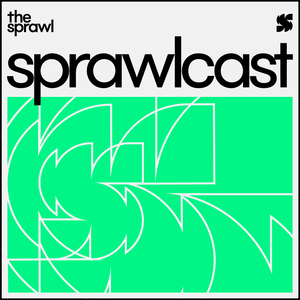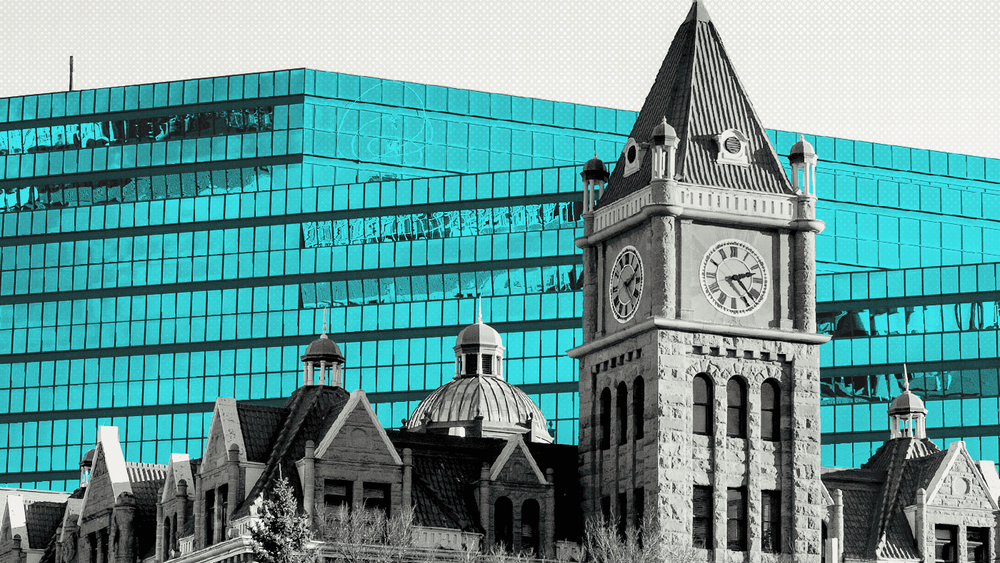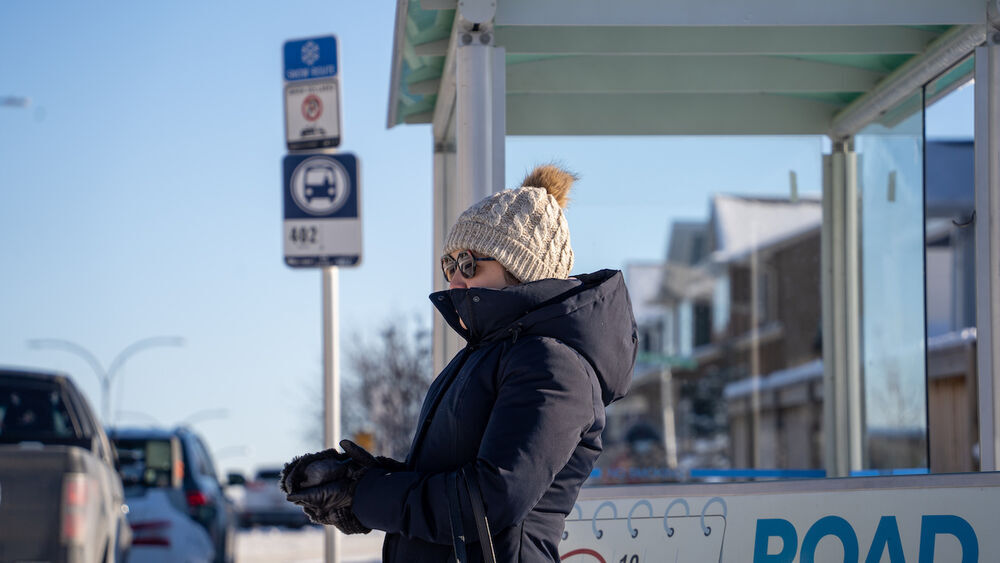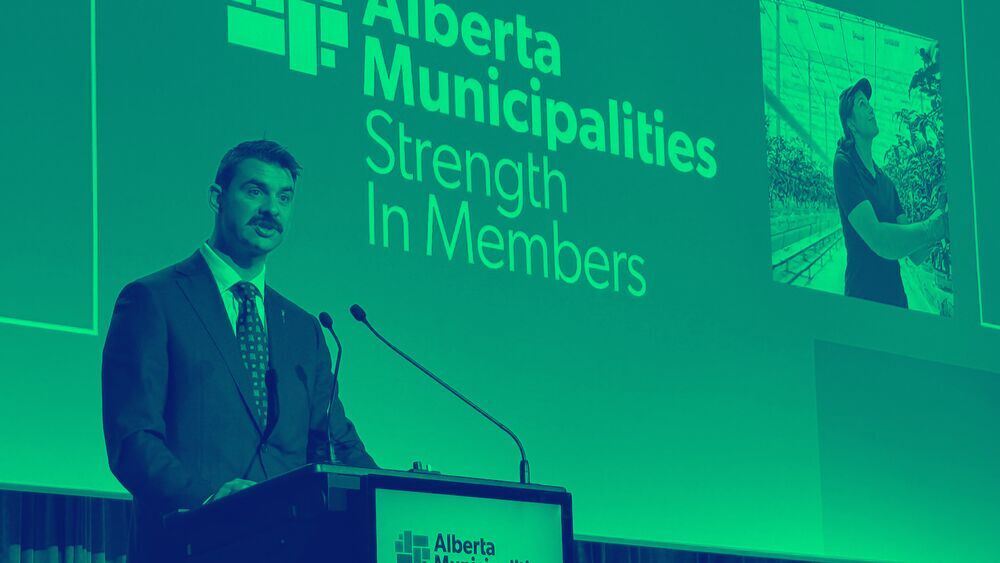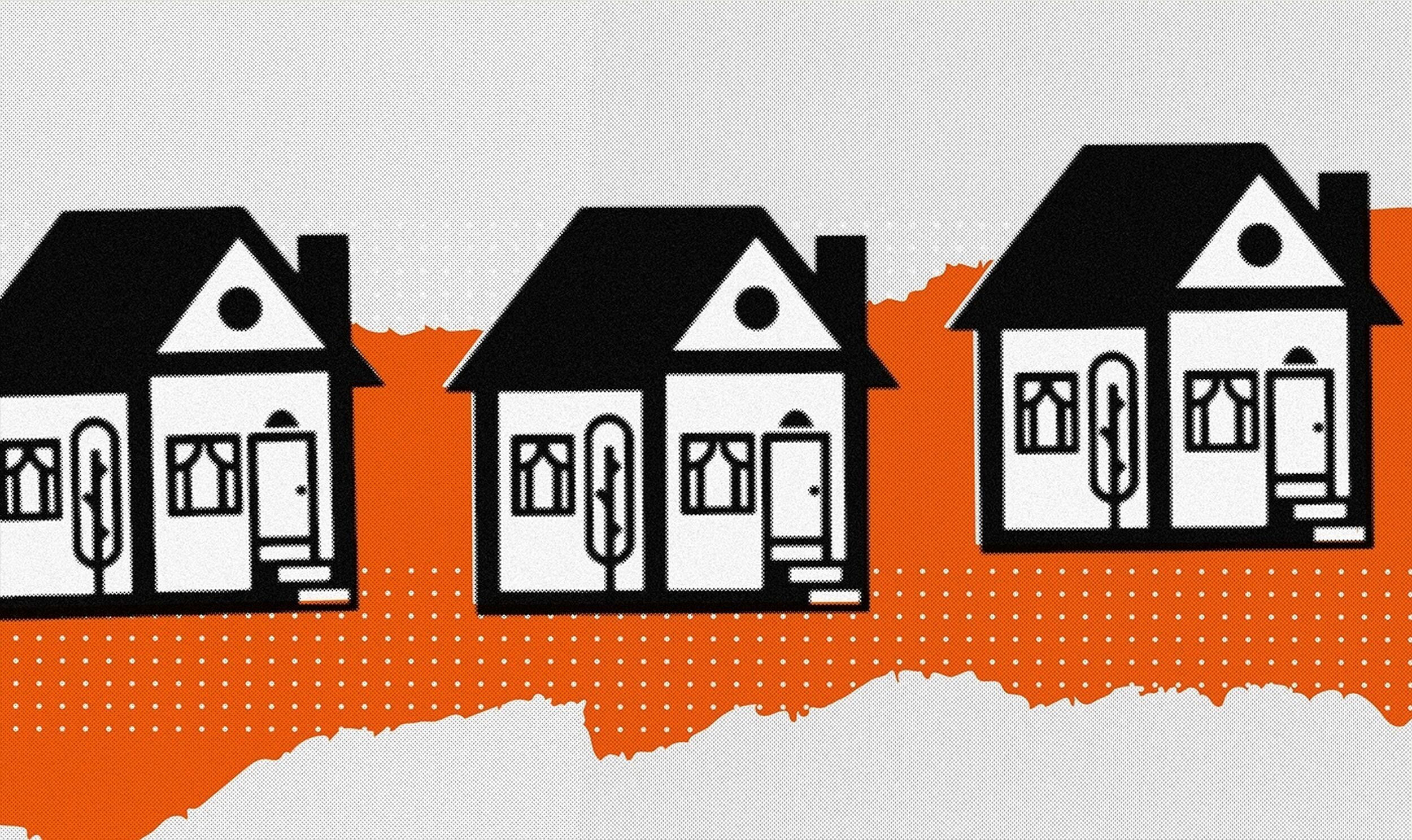
The nuances of NIMBYism
What’s beneath that label?
Sprawlcast is Calgary’s in-depth municipal podcast. Made in collaboration with CJSW 90.9 FM, it’s a show for curious Calgarians who want more than the daily news grind.
If you value in-depth Calgary journalism, support The Sprawl so we can do more stories like this one!
This month marks the sixth anniversary of The Sprawl's podcast/radio show, Sprawlcast.
That first Sprawlcast episode, titled "NIMBY City," is one of my all-time favourites. I like it because it embodies the kind of curiosity-driven journalism I aspire to do with The Sprawl. It asked questions rather than casting judgments. And it dug into a situation that is very timely: inner-city densification and NIMBYism (Not In My Back Yard).
The insights in that episode, about what the NIMBY label reveals and obscures, are as timely as ever, as the debate about citywide blanket rezoning in Calgary heats up in the run-up to the public hearing on April 22. For this reason we are republishing it today.
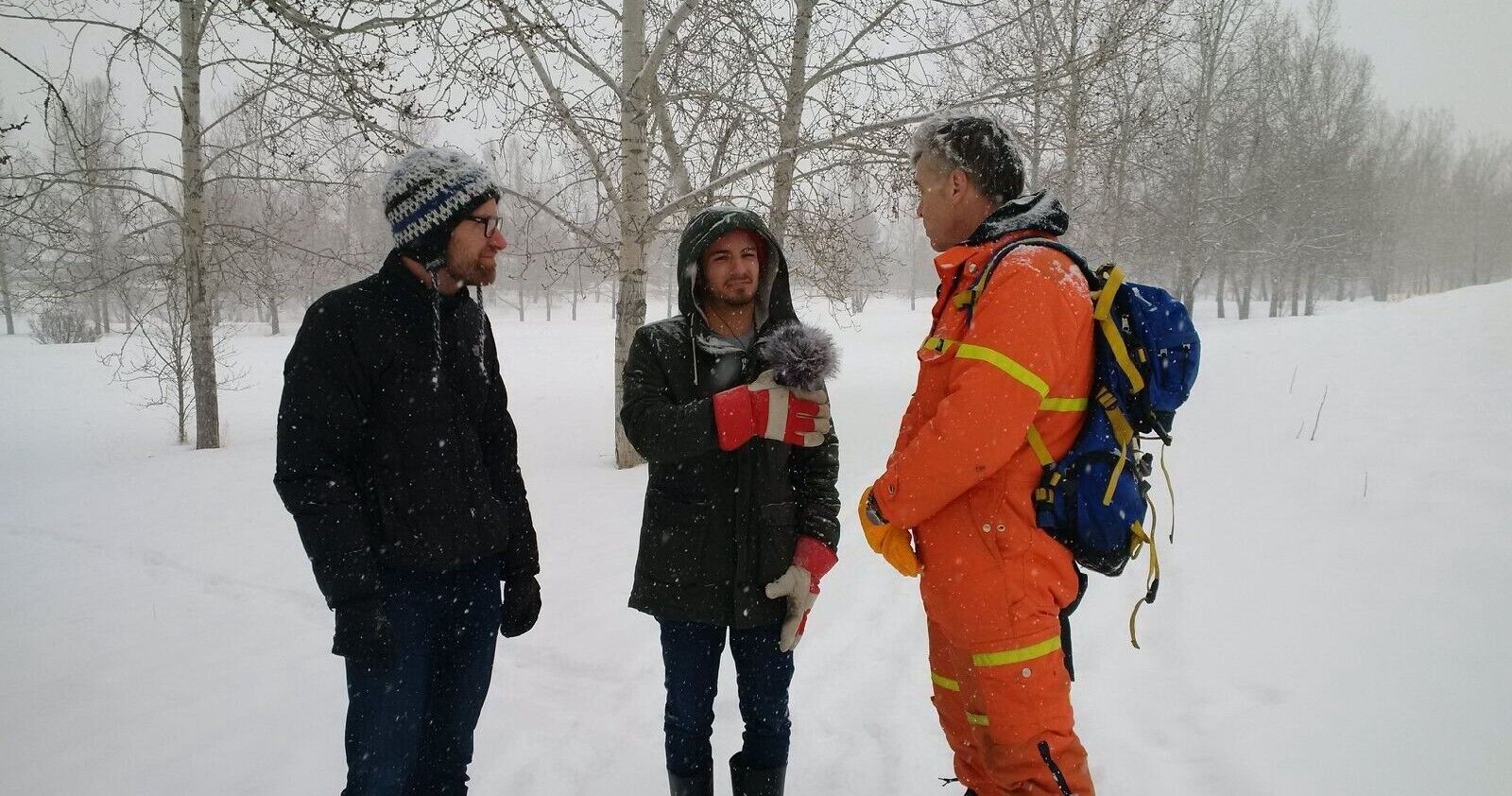
A full transcript is below for people who would rather read than listen.
JEREMY KLASZUS (HOST): You’ve heard the term, and you’ve probably used it yourself. NIMBY: Not in My Back Yard. It’s a term we use to describe ornery people who oppose things like secondary suites or rehab centre, or in the case of one southwest Calgary neighbourhood, bus lanes.
ANGRY GUY: Take a look at the people that live west of 14th Street. Take a good, hard look at them, and then tell me that those people are going to take public transit? My great aunt’s ass.
This opponent of the SW Transitway says area residents will take their Mercedes, not the bus, to get downtown #yyccc pic.twitter.com/5azPAzPQD0
— CBC Calgary (@CBCCalgary) February 24, 2016
KLASZUS: Ah, my great aunt’s ass. That there is a beautiful moment, perfect its absurdity. It’s from the southwest BRT debacle that happened a couple years ago. But, we’re not here to deride so-called NIMBYists. We’re here to understand them. And to do that, I visited the site of a contentious development in north-central Calgary. Now, this isn’t a place where people are angry and mad and shouting. That’s already happened in this case. Things are quiet now.
MARVIN QUASHNICK: So, my name’s Marvin Quashnick. I’ve been a volunteer with the Thorncliffe Greenview Community Association for about 16 years. I’m currently the vice president for public service.
KLASZUS: How do you feel about that term, NIMBY?
QUASHNICK: Well, it’s loaded. It’s a loaded pejorative from where we’re sitting, in that once it’s introduced into the conversation, it pretty much shuts down engagement—or it can.
KLASZUS: Marvin suggested something about NIMBYism that I hadn’t really considered before.
QUASHNICK: Sometimes that initial response, which I could liken to the medical inflammatory responses, where there’s a fevered, high-intensity pitch of anguish. And it’s not necessarily pretty, and prejudices may be exposed, is not necessarily a bad thing, as long as it’s taken for what it is, which is that initial gut reaction to, “Hey, this is my spot. Even though I don’t own it, I have this sense of belonging to this place.”
ALISON ABBOTT: My name is Alison Abbott, and I’m a director with the Thorncliffe Greenview Community Association, and I’ve been involved about five years, four-and-a-half, five years now.
KLASZUS: And what do you think of this term NIMBY? When you hear that label, how do you feel about it?
ABBOTT: It’s actually for me, it’s a very frustrating label, because I think when you’re involved in advocacy for your community, regardless of the issue, as Marvin said, there’s always an initial reaction. But I think once a group is painted with the word NIMBY, you can never get rid of that.
And it actually prevents people from sometimes speaking up. I’ve had people come and say, “I’m really worried about this, but I don’t want to come across like a NIMBY.” So it can really paint people into a corner, or prevent, as Marvin says, that dialogue you need to have. Let’s hash it out and then you usually get to a better place once you’re able to do that.
KLASZUS: And what do you think we miss when we use that label, NIMBY, too hastily? I’m a journalist, and I’ve used that probably carelessly at times. What do we miss when that happens?
ABBOTT: I think you miss what’s behind the concerns or the issues because usually there’s something there, whether it’s just resistance to change or other issues. But I think the initial—I’ll pick on you as a journalist.
KLASZUS: Sure.
ABBOTT: The initial story of NIMBY is always, “A whole mob, they’re all upset, they’re angry,” and then you never hear anything about it again. You never really follow the journey, what happened, how things changed.
I think that NIMBY is a really unfortunate term because it really boils an issue down to you’re either in favour or you’re against.
Densifying the 'donut of decline'
KLASZUS: Okay, so let’s follow the journey. I met Marvin and Alison in Highland Park. It’s in the so-called “donut of decline.” Now, you might have heard that term. It describes neighbourhoods between the inner city and outer suburbs that have had their populations decline over the last couple decades. So, these neighbourhoods need rejuvenation, they need more people.
This isn’t a neighbourhood where people are angry and mad and shouting. That’s already happened in this case. Things are quieter now. It’s a peaceful valley, the former Highland Park golf course.
QUASHNICK: Many people within the area are completely unaware this place even exists.
KLASZUS: Yeah.
QUASHNICK: They may get a glimpse of it when they drive down Center Street or McKnight, but until you actually come down here, you don’t really quite get the size of it or the nature of it.
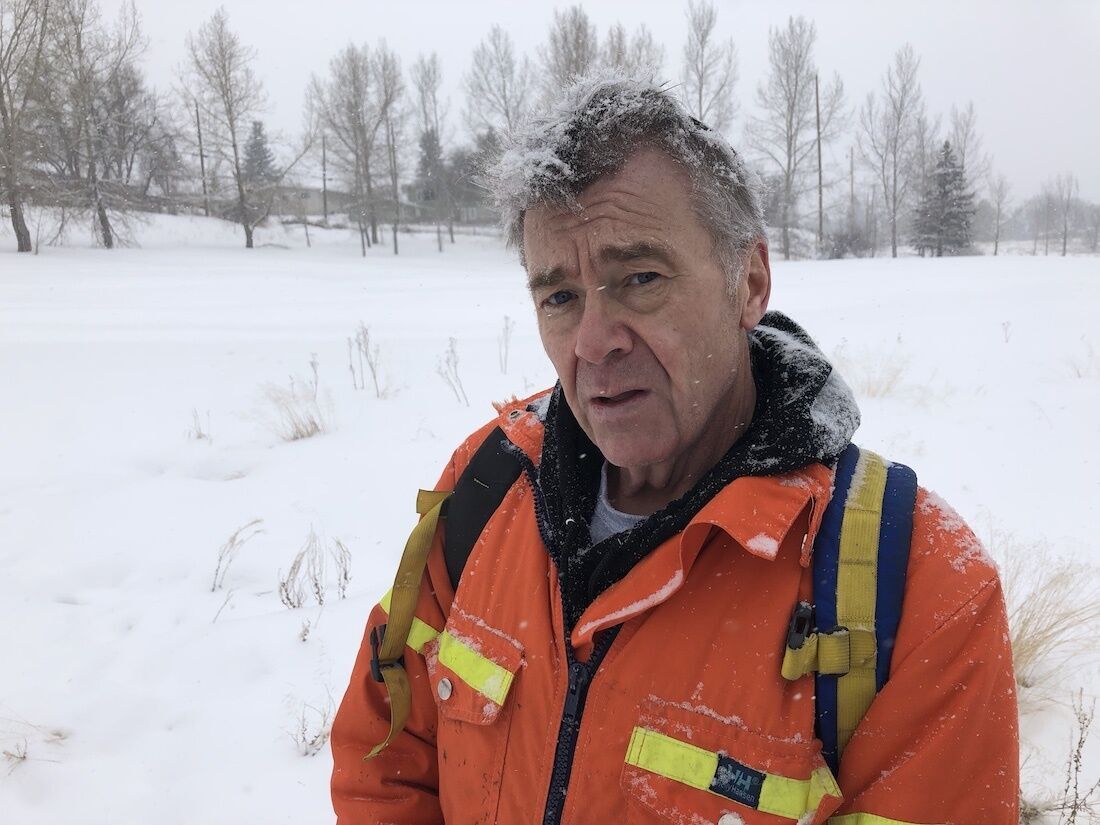
KLASZUS: I got a tour of the site from Marvin and Alison who lived nearby, and we weren’t the only ones there either. There were people there walking their dogs among the cottonwood trees in the valley, and I could picture it in summertime being a great place to throw around a baseball.
QUASHNICK: Quite instinctively, people are becoming intimate with this place, even though technically, it’s not theirs. And I would think if you ask 90% of them who are walking down here, they wouldn’t know it’s not public property.
KLASZUS: Yeah. It has the feel of a public park, for sure.
QUASHNICK: It does, yeah. And this is something within the neighbouring communities that’s kind of been an ongoing thing—even to my parents’ generation when they first bought into the neighbourhood—is that there was early promises by the City that this would be a continuation of Confederation Park, and that would link up to the pathway system along Nose Creek. And for one reason or another, it hasn’t happened.
KLASZUS: The golf course that was previously on the site shut down in 2012, and the next year, a Vancouver developer bought the site. They’ve got big plans for a mixed use, high density project. Think condos and retail. And this is right where the Green Line is slated to go when it runs north up Center Street. So, there’s potential for transit-oriented development here.
Sites like this are the future of Calgary because the City is trying to shift new growth into existing neighbourhoods instead of sprawling out onto the prairie. And so, it’s important that we get it right as a city, and that didn’t happen here.
'The community deserves better'
KLASZUS: Let’s quickly listen to City Councillors Druh Farrell and Gian-Carlo Carra. This is from a city council meeting in March of 2017.
FARRELL: This is the largest development that Ward 4 perhaps will have ever seen since they were first built. It’s the most significant development in generations. The community deserves better. The city deserves better.
CARRA: Yeah. This one’s a tough one because I’m not of the opinion that this plan is where it needs to be, by a long shot.
KLASZUS: The local MLA, Craig Coolahan also weighed in at the time.
COOLAHAN: In Calgary’s greatest riding, Calgary-Klein, a four-tower development that could be home to nearly 2,000 people is being proposed on the site of a former nine-hole golf course. Recently, the affected community associations, Highland Park and Thorncliffe Greenview, as well as several community members throughout the area and the non-profit group Calgary River Valleys, held the Rally in the Valley.
The Rally in the Valley highlighted the concerns that residents have in regards to the proposed development. This development will see the removal of nearly 600 mature trees of all varieties that are home to many species of birds. The area is also a thriving wetland that serves as a stormwater management solution for north-central Calgary. Confederation Creek also runs through the area but has been vaulted for many years. It too helps with removing rainwater from the area.
Mr. Speaker, I know the people of these communities, and they are not NIMBYists. They believe in densification and livable, vibrant communities. They just want it done right.
KLASZUS: Okay, so we’re going to do a post-mortem of this because city council approved the development last year, pending the results of a drainage study. We’ll get to that later, but for now, let’s go to the Highland Valley.
QUASHNICK: We’ll maybe just walk around the corner before the snow gets too deep. When I was here last night, you could see the open water from the last remains of the wetland are. So, you see a small patch of open water there.
They keep talking about, ‘Don’t take the park out of Highland Park.’ Well, it’s never been a park.
QUASHNICK: But in the spring and the summertime, this will expand, probably about 100 meters or so wide. This is all spongy ground that we’re walking on right now. Sort of maybe the last thing we’re looking for is what has sprung up in the last 20 to 30 years, which is an emerging urban forest. There’s approximately 650 trees, primarily cottonwoods. They have by de facto turned into a form of living infrastructure as flood control. Prior to their existence, this valley would pond quite frequently. But since that has started to grow up, they suck a lot of the flood water. So, they are an important resource, not just pretty to look at in the summertime when they leaf out.
KLASZUS: Here’s the other thing you need to know about this place. A creek runs through it, but you can’t see it. That’s because it was put underground about 50 years ago. And now, it flows through a vault beneath the site. Now, there’s a push by locals to have this creek daylighted, in other words, bring it to the surface. This is the trend in cities nowadays. The idea is basically let’s work with nature here instead of against it.
The trouble with 'NIMBY'
KLASZUS: So, I’m here with Elise Bieche. She’s president of the Highland Park Community Association. Thanks for being here, Elise.
BIECHE: It’s absolutely my pleasure. Thank you so much for thinking of this topic and having me in.
KLASZUS: For sure. Maybe just to start, can you tell us a little bit about your community, about Highland Park?
BIECHE: Yeah, absolutely. So, I consider Highland Park to be a pretty cool little neighbourhood. It’s an aging community, absolutely. Our last demographics were 66% rental, you know, a lower demographic. For the last 10 years, Highland Park has actually been a "neighbourhood of promise." So that means that we’ve been on the tipping point of poverty. And we’ve been very fortunate to be involved in specific programs with the City of Calgary to make sure that our community doesn’t swing into further disrepair kind of thing.
KLASZUS: And, in your case, residents had some very specific knowledge about the site in question.
BIECHE: Yeah.
KLASZUS: That was quite valuable in terms of deciding what’ll go there, how it’ll go there, all that stuff. What did residents know?
BIECHE: So, I think that we were incredibly lucky that we had a significant amount of historical knowledge on this site, and that was around the vaulting of the creek that happened in the ’70s, the natural springs that were on site. We had an incredible understanding as kind of local area subject matter experts as to how the site flooded in heavy rains and how water flows through the site.
And, in addition, there are some dedicated individuals who have spent a significant amount of time at city hall really researching the history of the site itself. So, the unstable slopes and banks, the history of the site in terms of it being expropriated, and then there was a court battle around it. And yeah, we had a lot of information. I am so impressed by the individuals within the community who have given their time to learn about this site.
Nothing gets people more frustrated than going to an open house and there’s little picture boards set up all over.
KLASZUS: And, we’re talking about NIMBYism today and looking at how we use that label in Calgary, and if it’s warranted, and what we miss when we apply that label. So, I’ll just put it out to you open-ended. How do you feel about that term, NIMBY?
BIECHE: You know what? When we were working with Thorncliffe Greenview on issues around the Drop-In Centre, we came up with our own NIMBY term, and that was Neighbours Involved Mean a Better YYC. And I think that NIMBY is a really unfortunate term because it really boils an issue down to you’re either in favour or you’re against.
KLASZUS: So, what was it like to be on the receiving end of that label, being called a NIMBY?
BIECHE: Being called a NIMBY? It was not awesome at times. But I think that individuals who called us NIMBY didn’t understand the entire application, the entire proposed development, and our entire position. And I guess I can fault myself for that because maybe we didn’t make ourselves clear enough, but at the same time, I would reject a NIMBY label in so much as we were a group that was accepting of development, just not necessarily this development.
A candid conversation with the developer
KLASZUS: Okay, hold on for a second. I just want to hit pause on that interview with Elise for a moment and I want to bring in the developer. His name is Ajay Nehru. He’s the president of Maple Projects, which is based in Vancouver. And this is the exact sort of thing that drives him crazy. Let’s hear what he has to say.
NEHRU: The interesting thing is that most people who are NIMBYs, the first thing they say, the first thing that they start any sentence with is saying, “We’re not opposed to development.” You know? “We’d like to see development here.” And that’s nothing but a fiction. And the reality is that this is where I think you need strong governorship. This is where you need somebody to say, “Look at – this is exactly – .” I mean, Calgary is trying to stop the spread of urban sprawl. Calgary is trying to encourage densification.
KLASZUS: Okay. I’ve got to tell you. I like this guy. Usually you phone up a developer in a case like this to ask for comment, and they give you something like, “Consultations with the community are ongoing.” But here, he’s actually leveling with us, and I think he has something to say. It’s easy to vilify the developer in cases like this, but hear him out.
He bought this land five years ago. He submitted an application to the City. He’s done upwards of 10 open houses with the community. He’s revised his plans multiple times in response to resident feedback, so he’s done things like cut building heights and expand the park that’s slated to go on the site. So, he’s made some changes, he’s listening, and still the project is in limbo. It can’t go ahead until a drainage study is finished, and that’s supposed to happen later this year. So for right now, the residents have their park in the valley.
NEHRU: They keep talking about, “Don’t take the park out of Highland Park.” Well, it’s never been a park. You know? And so it becomes – it’s a very frustrating thing to deal with. And I mean, the problem is that I think that at some point as a developer, I need the help of the councillors, I need the help of the people in power to say, "Enough is enough. This is just unacceptable." So, I keep sort of working with the City, working with the community, working with people to try and move this ahead, move this ahead, and then there’s always a new hurdle. It gets frustrating at times.
At some point as a developer, I need the help of the councillors, I need the help of the people in power to say, ‘Enough is enough.’
KLASZUS: Okay, so now we’re going to go back to that interview with Elise. If this label, NIMBY, isn’t helpful, how do we get away from that as a city?
BIECHE: If we don’t want NIMBY, then we have to create a better process for engagement. This city often allows the wrong individuals to lead the dialogue, and so what happens is a developer comes in, and they put together—or in this case, the developer came in, they put together a plan, they put together two plans, and then they had the community vote on the plans. Then those plans were submitted to the city, the city worked with the applicant, they modified the plans, and then the city is left to defend the applicant’s plan. And, that’s wrong.
The city should never, ever be in a position where it has to defend a private land owner’s choices. And I think that that’s a lot of where NIMBY stems from. It’s that we have our engagement model backwards.
KLASZUS: Okay, so this is why this is such an interesting case study to me. The community doesn’t feel heard by the City. They don’t feel that they’re being represented by the City of Calgary, but the developer doesn’t feel heard or supported either. Nobody is happy.
NEHRU: If I was to start on something like this from day one, I would want a lot more involvement from the City of Calgary in terms of support, recognizing that this is going to be a billion dollar project and that it’s going to have all these positive things for the city. I would say to the city, what are you going to do to help me achieve this, given that that’s something that they want. You talk about all of these things that you want. Here’s exactly a project that has all of those things. You have aging in place possible here. You have walkability to retail here. You have walkability to transit here. You have all of these things that are your mantra for exactly what you’re looking for. Well, show me how you’re going to help me.
KLASZUS: Perhaps unsurprisingly, from the developer’s vantage point, NIMBYism is definitely a thing.
NEHRU: The problem is that the opponents, this group of 20 or 30 folks, they pick one aspect and they go to town with it. Then, when they lose on that aspect, they pick something else. So, that’s what I found here is I found that the community association would pick a certain thing and say, “All right, well, we want the green space to be not linear. We want it to be a larger green space.” So, that becomes the battle cry. All right, fine, we’ll give them that. So, now we move to the water. That’s the big issue.
The hidden creek in the valley
KLASZUS: Now we’re going to go underground. Now, remember, you can’t see this creek on the surface. It’s beneath the site, running through a dark tunnel.
QUASHNICK: We are entering the bowels of the earth through a water course. Even though it’s surrounded by the designs of humanity, you will discover when you’re in there this is entering another world.
KLASZUS: When I hear about a creek here, I was picturing a little trickle of water, but this is pretty substantial down here.
QUASHNICK: Yeah. Part of the little trick we used to do as kids was ride our bikes through here when there was openings at either end, right?
KLASZUS: With water in here?
QUASHNICK: With water in here. And as you got better at it and you became teenagers, you did it without light. That didn’t have particularly good results.
KLASZUS: So, this fills right up, you’re saying, like when it’s—
QUASHNICK: During a storm event, yeah. It fills up and beyond, then we’ll see overflow into the valley. And there’s also—you know, you then get backup even though there’s a tremendous grade differential. Between here and say the upstream of this creek, it has had backups well up to McKnight. Not of a great enough proportion to have flooding, but concerning in that it’s just barely handling the water during an event.
We have our engagement model backwards.
KLASZUS: As you can tell, this is a complex file. There’s not an easy answer here. The community wants something that integrates better with the valley, and while we were underground, Marvin talked about how to balance developments like these with existing neighborhoods.
QUASHNICK: The one counterbalance that you need to the density is to make life more livable outside your four walls. And if that’s better green space, or better connectivity to LRT, these are all things that have to be factored into it. That’s why as you do these developments in the inner city, even without something as fundamental as the storm water aspect to this site, it’s more complicated, more sophisticated.
KLASZUS: In January, the City released the early findings of the drainage study, and it shows four options for what could happen to that site in terms of storm water management. And one of the options is to basically put the site underwater and use it for storm water storage. For the community associations, this was a vindication of sorts because they’d been saying, “Hey, we need this valley for more than just development.” They’d been emphasizing the importance of the water. So, city council went in camera to discuss this in January. That means into a room where nobody can hear or see what they’re talking about. And here’s what Mayor Nenshi had to say after they emerged.
NENSHI: So, for the members of the public, I know you’ve been waiting all day, and what we have to offer you is a 12 or 13-slide Power Point presentation. But the good news is that I think that we’re all on the same page now. In fact, I think that you were ahead of council, and it was important that council come to the same point, and there will be a lauded discussion and a lot of work on this. And just thank you for your advocacy on it.
KLASZUS: But now, the City of Calgary is in a bit of a bind because they didn’t buy the site when they had the opportunity.
NEHRU: And so, their idea is, “All right, we need to find places to store this water.” And they found a number of places, one of which may be my lands – some of my lands. Now, you have to understand that the city, obviously, can’t use private land for a public good. They can’t use my lands for storm water drainage or management. They would have to buy the lands or a significant portion of the lands. As a land owner, I have the same rights to not have my lands flood as you do as a homeowner. You see? So, the city has to make a choice. The city has to say, “All right. Well, this is one option. What are our other options?” And that’s exactly what they’re doing right now.
What can we learn from this example?
KLASZUS: At the end of the day, what can we learn from this as a city? Here’s Troy Gonzalez. He’s a planner with the city.
GONZALEZ: One of the key things that we look at for particularly these bigger sites is the earlier we can do engagement, the better. And so, we’re applying that now on some of the other larger applications. You may be aware of, for example, the Co-op applications. A little bit of a different context, but a lot of those, we went through very tailor made engagement processes to ensure that we had a successful process, and citizens and residents felt that their concerns were being listened to and ultimately had an impact on the outcome of the file.
QUASHNICK: We were fortunate enough to go through a little bit of a rearview mirror study with the city engagement team, which I think was quite beneficial, if only it made us feel a little bit better. But the message I tried to convey was there were no pure villains here other than maybe the system itself. Yeah, the developer, he made a few mistakes. I think he had a sincere desire to do a proper engagement, but he was a little clumsy at times. From our perspective, we knew the water was a big deal, but yet we took a more quiet backseat role, instead of being quite as strident as we have become.
Our town hall meetings are messy. We have open mic. Everybody asks questions. Everybody discusses. That’s what people want.
KLASZUS: I’m going to give the last word here to Alison Abbott, because I think she gets to the heart of it. Maybe these NIMBY uprisings, or whatever you want to call them, maybe they’re healthy. Maybe we need that. Maybe that’s a healthy part of the process and we need to be a little less dismissive of that.
ABBOTT: Everyone talks about engagement, and I think we don’t have true engagement in these situations. We have a lot of, presentations are done, or they set up boards all around our hall and people come and visit. You don’t just discuss. And one of the things I think we’ve done well as a community association is our town hall meetings are messy. We have open mic. Everybody asks questions. Everybody discusses. That’s what people want. Nothing gets people more frustrated than going to an open house and there’s little picture boards set up all over. They talk to eight different people. They don’t get a comprehensive story.
And just those actual messy discussions, you know, when I think about the various town halls we’ve had on this or other issues, it makes such a difference. And they’re respectful, and people start saying, “Well, I didn’t think of that.” Or, “What about that?”
And that’s what engagement is. It’s not picture boards and just setting it up, checking it off the box. It’s hard work, but it’s worth it in the end.
A quick update on this story: In 2021, Maple Projects sued the city, alleging that city hall indicated that it was interested in development on the site, but actually intended to de facto expropriate the lands for stormwater storage. The city countered that the low-lying lands are naturally a stormwater catchment, and that the developer should have known that a big project in this location would be problematic.
The situation is still in court.
Jeremy Klaszus is editor-in-chief of The Sprawl.
Support independent Calgary journalism.
Sign Me Up!The Sprawl connects Calgarians with their city through in-depth, curiosity-driven journalism. But we can't do it alone. If you value our work, support The Sprawl so we can keep digging into municipal issues in Calgary!
